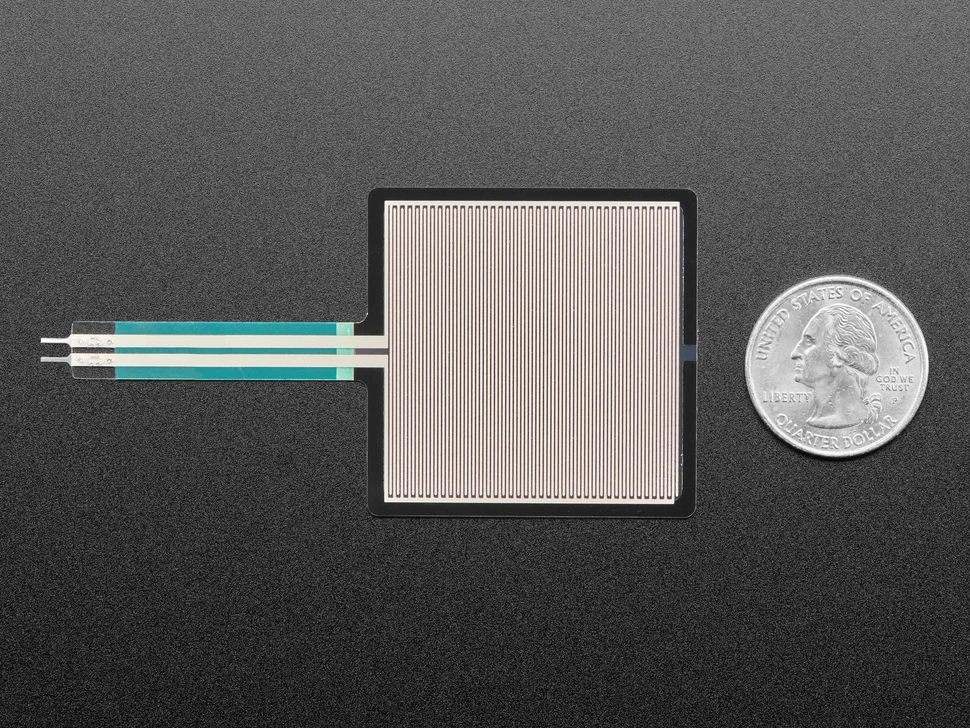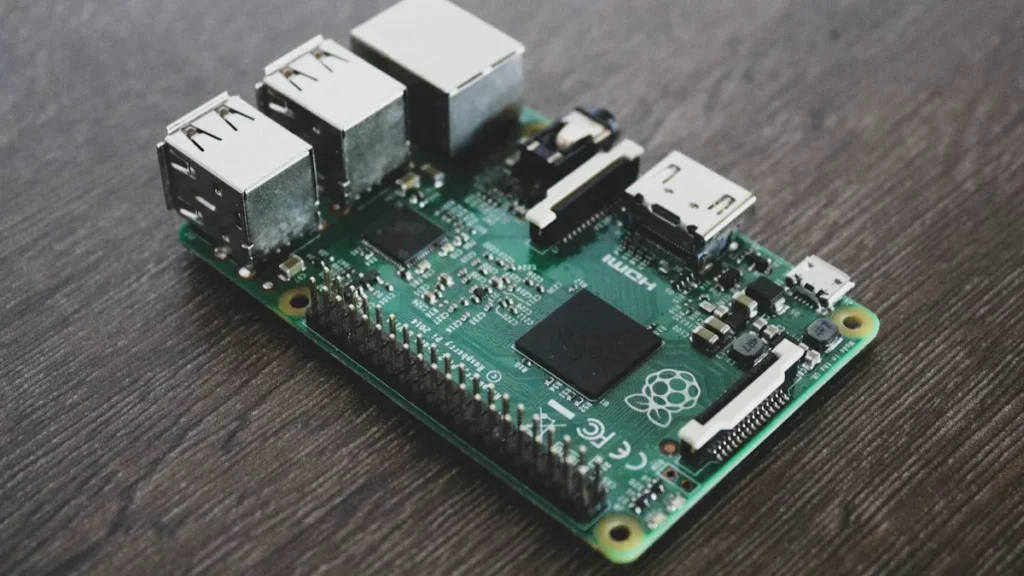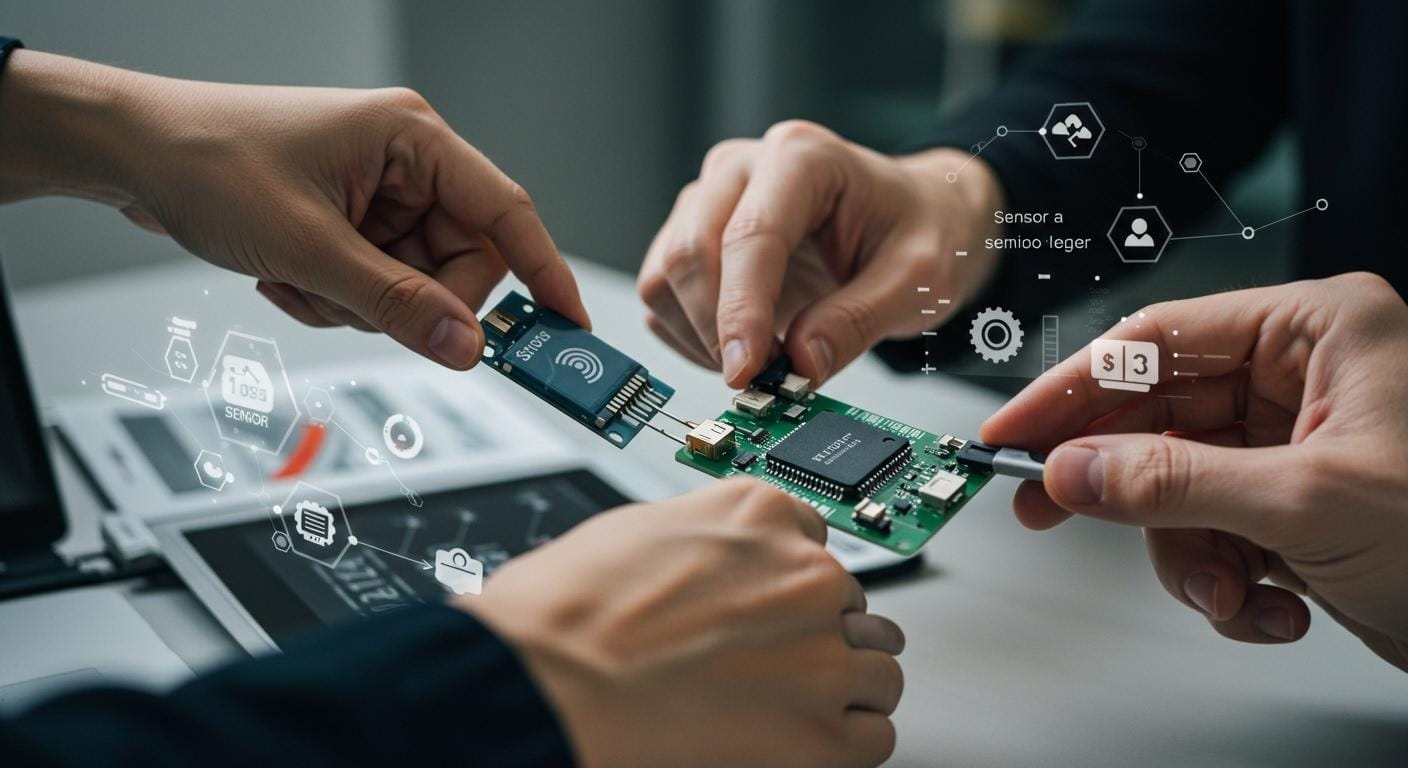Call us: +86-137-2353-4866
Looking for sensor integration you can trust? We recommend tools like the SOUSHINE Force Sensing Resistor, Node-RED, Siemens MindSphere, and others. The SOUSHINE Force Sensing Resistor is excellent for force sensing across various fields. When selecting a tool, consider factors such as reliability, compatibility, support, community, and security. Choose what best fits your needs in healthcare, industrial automation, or embedded systems. Here are important considerations:
| Factor | Description |
|---|---|
| Type of Measurement | Sensors can detect temperature, pressure, motion, or humidity. |
| Accuracy and Sensitivity | Medical devices require high precision, while industrial sensors must be robust. |
| Power Consumption | Battery-operated systems need sensors that consume minimal power. |
| Communication Interface | Sensors typically interface using I2C, SPI, UART, or analog output. |
Table of Contents
Key Takeaways
- Pick sensor integration tools you can trust. This helps your system work well all the time. Check things like Mean Time to Failure and what customers say. These help you know if the tool is reliable.
- Make sure the tools work with your devices. They should fit with your platforms too. Choose tools that work with many sensors. They should use different communication protocols. This makes it easy to connect everything.
- Put security first when picking sensor tools. Good security keeps your data safe. It also warns you if something is wrong.
- Think about what your project needs before you choose sensors. Look at things like how accurate they are. Check how much power they use. Think about the environment where you will use them. This helps you pick the best ones.
- Join user groups and try demos to learn more. Talking to others helps you understand better. The community can help you fix problems quickly.
Sensor Integration Criteria
When picking a sensor integration tool, you need to make sure it fits your needs. Let’s look at the most important things to think about.
Reliability
You want your system to work all the time. Reliability means your sensors keep working without stopping. Experts use things like Mean Time to Failure, Mean Time to Repair, and Mean Time Between Failure to check this.
| Metric | Description |
|---|---|
| Mean Time to Failure (MTTF) | How long it works before breaking |
| Mean Time to Repair (MTTR) | How long it takes to fix something |
| Mean Time Between Failure (MTBF) | Time between one problem and the next |
| Availability | How often the system is working |
You can also look at how many problems customers report. Fewer problems mean the tool is more reliable.
Compatibility
Your sensor integration tool should work with your devices and platforms. Good tools work with many sensors, protocols, and cloud services. Here are some things to check:
| Service Type | Description |
|---|---|
| Sensor Compatibility Assurance | Works with your IoT setup and cloud platforms |
| Multi-Sensor Integration | Uses data from different sensors for better results |
| Diverse Protocol Support | Works with Bluetooth, Zigbee, Wi-Fi, and others |
| Data Normalization | Makes sensor data easy to use |
| Cloud Platform Integration | Sends data to AWS, Azure, Google Cloud, or your own system |
Make sure your tool works with what you use now and what you might use later.
Support & Community
You might need help when setting up or fixing problems. A good support team and active community can help you a lot. Look for these things:
- Quick customer service
- Easy-to-read instructions
- Online groups or forums
- Updates that come often
Tip: Join user groups or forums to get tips from people who use the same tools.
Security
Security keeps your data safe from harm. New sensor integration tools have features like motion detection, alerts, and smart system connections. Some tools let you set special modes or watch for activity. You want features that protect your system and warn you about problems.
- Sensors can turn on alarms or lights.
- You can get alerts if something strange happens.
- Some systems connect to centers that watch for problems and respond fast.
Pick tools with strong security to keep your data and devices safe.
Recommend Tools for Sensor Integration
You want to connect sensors to your projects. There are many good tools you can use. Each tool has special features and works in different places. Some tools are best for factories, and some are good for schools.
Node-RED
Node-RED lets you link sensors, databases, and dashboards. You use blocks to build your system. It helps with energy checks, collecting data, and learning programming. Node-RED is great for small devices and big machines.
| Feature/Use Case | Description |
|---|---|
| Workflow Automation | Makes jobs easier and connects data |
| Modbus Energy Monitoring | Gets sensor data with Modbus |
| Data Collection | Uses InfluxDB and Grafana for saving data |
| Educational Tool | Shows programming with easy blocks |
| IIoT Dashboard | Displays sensor data now and from before |
Tip: Try Node-RED if you want to see sensor data quickly.
Siemens MindSphere
Siemens MindSphere is a cloud tool for sensor data. It shows live data and helps fix machines before they break. MindSphere uses OPC UA, so you can link many devices. Factories use it to watch machines and plan repairs.
- Live data from IoT sensors
- Connects with Siemens PLM and MES
- Finds problems before they happen
- Uses AI to help make choices
- Good for big factory projects
PTC ThingWorx
PTC ThingWorx connects lots of devices. You see data right away and work with your team. Use ThingWorx in factories, oil fields, buildings, and utilities. It helps you collect data, study it, and change things fast.
Note: ThingWorx is good if you have many devices and need to share data easily.
Ignition by Inductive Automation
Ignition links sensors, databases, and devices. It works on any computer. Ignition uses OPC-UA to talk to controllers. You get live data and can save it in SQL databases. It is great for factories and small devices.
| Strengths of Ignition | Description |
|---|---|
| Flexibility | Works with any database or device |
| Modular Architecture | Connects to PLCs and RTUs with OPC-UA |
| Real-time Data Access | Shows and saves data right away |
| Integration Capability | Links to many systems and databases |
FlexiForce Sensor Integration Kits
FlexiForce kits help you measure force fast. You do not need to build circuits yourself. You can change the sensor’s range and test how it works. These kits are good for testing in labs and schools.
| Benefit/Application Area | Description |
|---|---|
| Ease of use | Start measuring force quickly |
| Time-saving features | No need to design circuits |
| Signal conditioning | Change sensor range easily |
| Characterization Kit | Test sensor in controlled places |
| Prototyping Kit | Move designs forward with easy steps |
| Support from engineers | Get help from experts |
Micro-Epsilon sensorTOOL & MEDAQLib
Micro-Epsilon sensorTOOL and MEDAQLib connect high-precision sensors. Use them for checking quality, automation, and research. These tools are best in labs and factories where you need exact measurements.
Tip: Pick Micro-Epsilon tools if you need to measure tiny changes very accurately.
FreeMASTER Sensor Tool
FreeMASTER Sensor Tool lets you test sensors and see data on dashboards. You can make your own apps and use open-source controls. This tool is good for small devices and testing new ideas.
| Feature | Description |
|---|---|
| Sensor Evaluation | Test sensors with demo screens |
| Data Visualization | See sensor data in charts |
| Application Development | Make custom apps for your needs |
| Custom User Dashboards | Build dashboards with JavaScript and HTML |
| Open-source Tools | Use dials and sliders |
SICK Sensor Integration Tools
SICK tools help you set up sensors in factories and robot areas. You get safety systems to protect machines and workers. SICK makes connecting sensors easy with less wiring. You can test setups with virtual models before using real ones.
- Safety systems for robots
- Easy connection to robots
- Virtual models for testing
- Quick setup with no extra work
- Less downtime and smooth work
MSCL Open-Source Library
MSCL is a free library for wireless sensors. Use it in small devices, research, and custom projects. MSCL works with many sensor types and helps you collect data.
Note: MSCL is great if you want to build your own sensor network and need lots of options.
Ascom Industrial IoT Solutions
Ascom helps you set up big sensor networks in factories. You get live data and alerts on your phone. Ascom uses open protocols, so you can link many sensors. You can watch equipment, find problems early, and make production better.
Ascom sends important info to the right people fast. You can use it to watch production lines and fix problems before they stop work.
SIMS-v1 for PreSens Sensors
SIMS-v1 works with PreSens sensors to measure oxygen, pH, and more. Use it in labs, medical devices, and research. SIMS-v1 makes it easy to collect data and track changes over time.
Tip: SIMS-v1 is good if you need to watch chemical or biological samples.
MRIGlobal Sensor Integration Services
MRIGlobal makes custom software to connect many sensors. Their OASIS system uses open architecture, so you can add new sensors easily. MRIGlobal works on big projects like CBRN sensor suites and command systems. Use their services for defense, research, and complex monitoring.
- Custom software for sensors
- Open architecture for adding sensors
- Live data for command and control
- Experience with big sensor projects

SOUSHINE Force Sensing Resistors (FSRs)
SOUSHINE’s Force Sensing Resistors help you measure force and pressure. You can pick the shape and size you need. These FSRs last a long time and use little power, so they are good for battery devices. You can connect them easily with simple wires. SOUSHINE gives good prices and strong support.
| Feature | Description |
|---|---|
| Customizable Shapes/Sizes | Pick the design that fits your project |
| Durability and Reliability | Use FSRs for many tests in tough places |
| Low Power Consumption | Save energy in battery devices |
| Ease of Integration | Connect FSRs to your system easily |
| Competitive Pricing | Get good sensing at a fair price |
| Quality Assurance | Trust the sensors to work well |
| Technical Support | Get help from experts |
You can use SOUSHINE FSRs in cars, healthcare, robots, electronics, and factories. These tools help you build smart systems that react to touch and pressure.
Tip: If you want a cheap, flexible, and reliable force sensor, SOUSHINE FSRs are a great choice.
Choosing Tools for Embedded Systems

Assessing Project Needs
You want your embedded system to work well. First, think about what you want it to do. Decide where you will use the system. Figure out what data you need to collect. Make sure your sensors help you reach your goals. Check if the sensors work in your environment. See how accurate and sensitive they are. Also, look at how quickly they respond.
- Here are some things to check:
- Mission objectives
- Environmental conditions
- Sensor compatibility
- Performance metrics
- Cost and reliability
Tip: Write down your project goals before picking a sensor tool. This helps you avoid mistakes and saves time.
Integration Complexity
Connecting sensors can be simple or hard. Think about how many sensors you want to use. Some sensors need special wires or chips. Others use easy connections. Check if your system can handle the sensors you choose.
- Common challenges include:
- Power consumption
- Noise and interference
- Calibration
- Communication latency
- Environmental impact
You can save power by using low-power modes. Fix noise problems with good signal conditioning. Test your sensors often to keep them working right.
| Factor | Description |
|---|---|
| Resolution | The clarity and detail of the sensor’s output. |
| Shutter type | How the sensor captures images. |
| Sensor size | Affects design and integration. |
| Sensor-lens matching | Makes sure parts work well together. |
| ISP | Processes image data from the sensor. |
Scalability
You want your system to grow with your needs. Scalability means you can add more sensors later. Pick tools that make adding new sensors easy. Make sure your system keeps data safe as it grows. You need strong security and good device management.
| Aspect | Description |
|---|---|
| Deployment Ease | Easy installation and automatic connections. |
| Security | Protects data and devices as you add more sensors. |
| Device Management | Handles many sensors and devices. |
| Connectivity | Keeps data moving between devices. |
| Planning for Future Growth | Helps you expand without problems. |
Note: Plan for future growth when you pick a sensor tool. This helps your system stay useful for a long time.
Data Integration Best Practices
Implementation Tips
You want your sensor system to work well. First, decide what you need to measure. Pick sensors that fit your goals. Make sure your sensors work with your hardware and software. Use standard communication protocols so sensors can talk easily. Choose sensors from trusted vendors who help you when needed.
Think about saving power. Use sensors that use less energy and wake up quickly. Plan for the future. Pick tools that let you add more sensors later. Use modern data platforms to handle sensor data right away. This helps you find problems and make fast choices.
Here are some steps you should follow:
- Write down what you want to do.
- Pick the right sensor type for your needs.
- Check if your hardware and software match.
- Focus on saving power.
- Know what kind of data you need.
- Use sensors that keep your data safe.
- Plan to add more sensors later.
- Choose sensors that are easy to set up and fix.
- Make sure you balance cost and how well it works.
- Work with vendors you can trust.
Tip: Make your setup the same everywhere. This makes it easier to connect data and helps you avoid problems later.
Common Pitfalls
You might have problems if you pick the wrong sensor. Make sure your sensor fits your project and works with your system. If you skip calibration, your data might be wrong. Always calibrate your sensors and use ways to fix errors.
Bad installation can break sensors. Follow the instructions and check your sensors often. If you forget about power or signal quality, your system might not work. Use good signal conditioning and watch your power use.
Look out for these mistakes:
- Picking sensors that do not fit your needs
- Not checking if things work together
- Skipping calibration and error fixing
- Installing sensors the wrong way
- Forgetting about power and signal problems
- Not planning for changes in the future
Note: Checking your sensors often and planning carefully helps you avoid most problems. Good data handling and strong protocols keep your system working well.
You have many trusted tools for sensor integration. SOUSHINE’s Force Sensing Resistors stand out for their accuracy, quick response, and easy setup. You can see these sensors in hospitals and cars, where they help keep people safe and save time. Other tools like Node-RED and Siemens MindSphere also help you connect and manage sensors.
- SOUSHINE’s sensors work in busy places and need little adjustment.
- Car makers and engineers trust these sensors for safety and long life.
- You can start small, focus on key areas, and build up as you go.
Try free demos or join user groups to learn more. Start your project with confidence and choose the tool that fits your needs.
FAQ
What is sensor integration?
Sensor integration means you connect sensors to your system so they can send data. You use tools to help sensors talk to your devices. This helps you collect and use information from the real world.
How do I choose the right sensor tool?
You look at what your project needs. Check if the tool works with your sensors and devices. Make sure it is easy to use and has good support. Try free demos if you can.
Can I use SOUSHINE FSRs in my project?
Yes, you can use SOUSHINE FSRs in many projects. They work in cars, robots, and medical devices. You pick the shape and size you need. They connect easily to your system.
Do I need special skills to set up sensor integration tools?
Most tools come with guides and support. You do not need to be an expert. You can follow instructions and ask for help if you get stuck.
What should I do if my sensors stop working?
First, check the connections and power. Look at the instructions for help. You can contact support or ask in user forums. Many problems have simple fixes.


